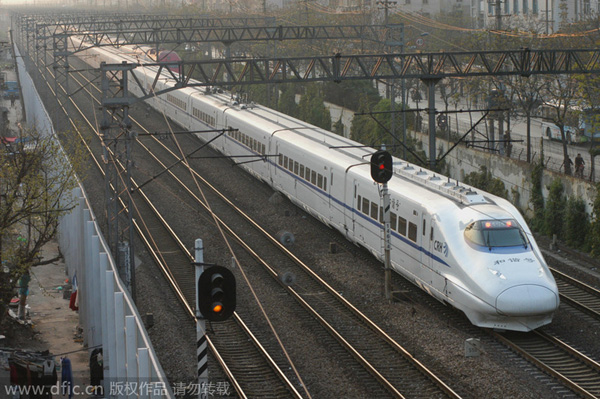China has announced that's it's developed new technology that will help its bullet trains reach an ultra-fast 500 km/h.
So what's a permanent magnet synchronous traction system? It's basically a motor that uses permanent magnets rather than a magnetic field created by windings of the rotor to propel the train forward.
Unlike the Maglev system, the train remains in contact with the track, and so is still subject to the effects of friction.
The new traction technology was developed by CRRC Corp, the country's largest train maker, and has been in development for close to 12 years, according to China Daily.
In 2011, the team installed a lower power 190-kilowatt version of the new traction system on trains running on Subway Line 2 in Shenyan, in the Liaoning province.
Today's bullet trains are mostly powered by alternating current asynchronous motors, a traction system that was developed back in the '70s. Jia Limin from Beijing Jiaotong University, and head of China's high-speed railway innovation program, told China Daily that the upgrade will reduce electrical configuration and could also reduce electrical consumption.
We'll wait until the new train speeds are verified before we get too excited, but we're always fans of anything that makes train travel faster and more efficient.
source: Go to source
So what's a permanent magnet synchronous traction system? It's basically a motor that uses permanent magnets rather than a magnetic field created by windings of the rotor to propel the train forward.
Unlike the Maglev system, the train remains in contact with the track, and so is still subject to the effects of friction.
The new traction technology was developed by CRRC Corp, the country's largest train maker, and has been in development for close to 12 years, according to China Daily.
In 2011, the team installed a lower power 190-kilowatt version of the new traction system on trains running on Subway Line 2 in Shenyan, in the Liaoning province.
Today's bullet trains are mostly powered by alternating current asynchronous motors, a traction system that was developed back in the '70s. Jia Limin from Beijing Jiaotong University, and head of China's high-speed railway innovation program, told China Daily that the upgrade will reduce electrical configuration and could also reduce electrical consumption.
We'll wait until the new train speeds are verified before we get too excited, but we're always fans of anything that makes train travel faster and more efficient.
source: Go to source
